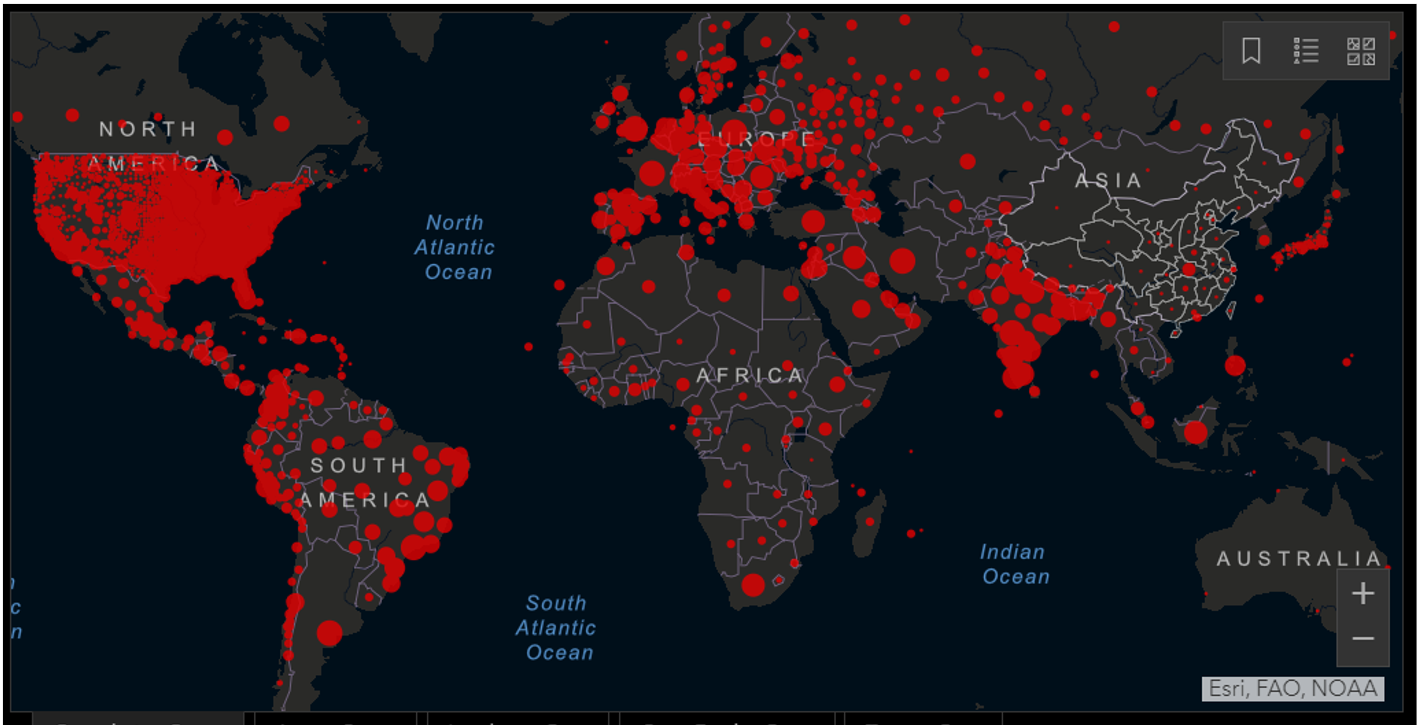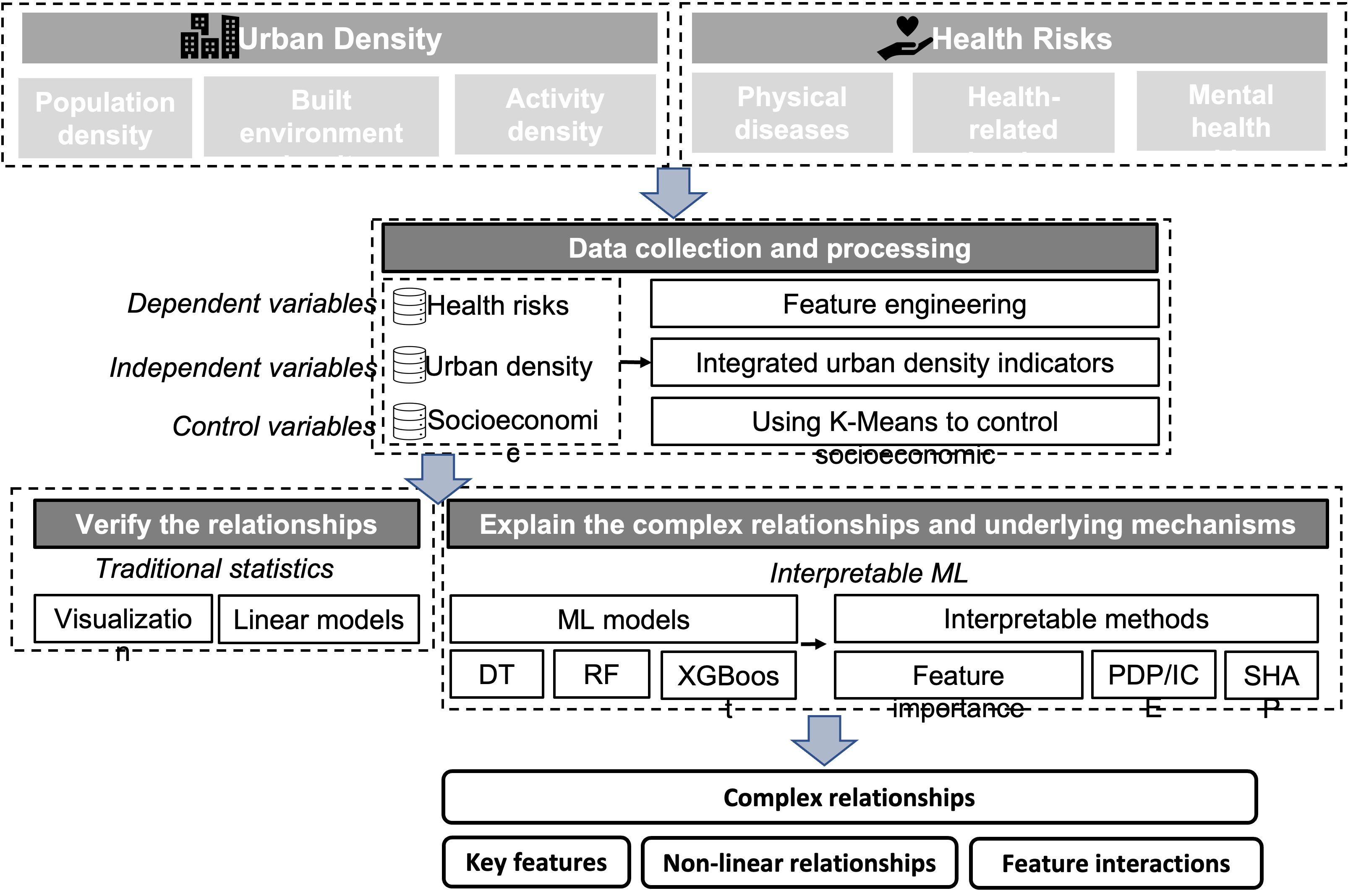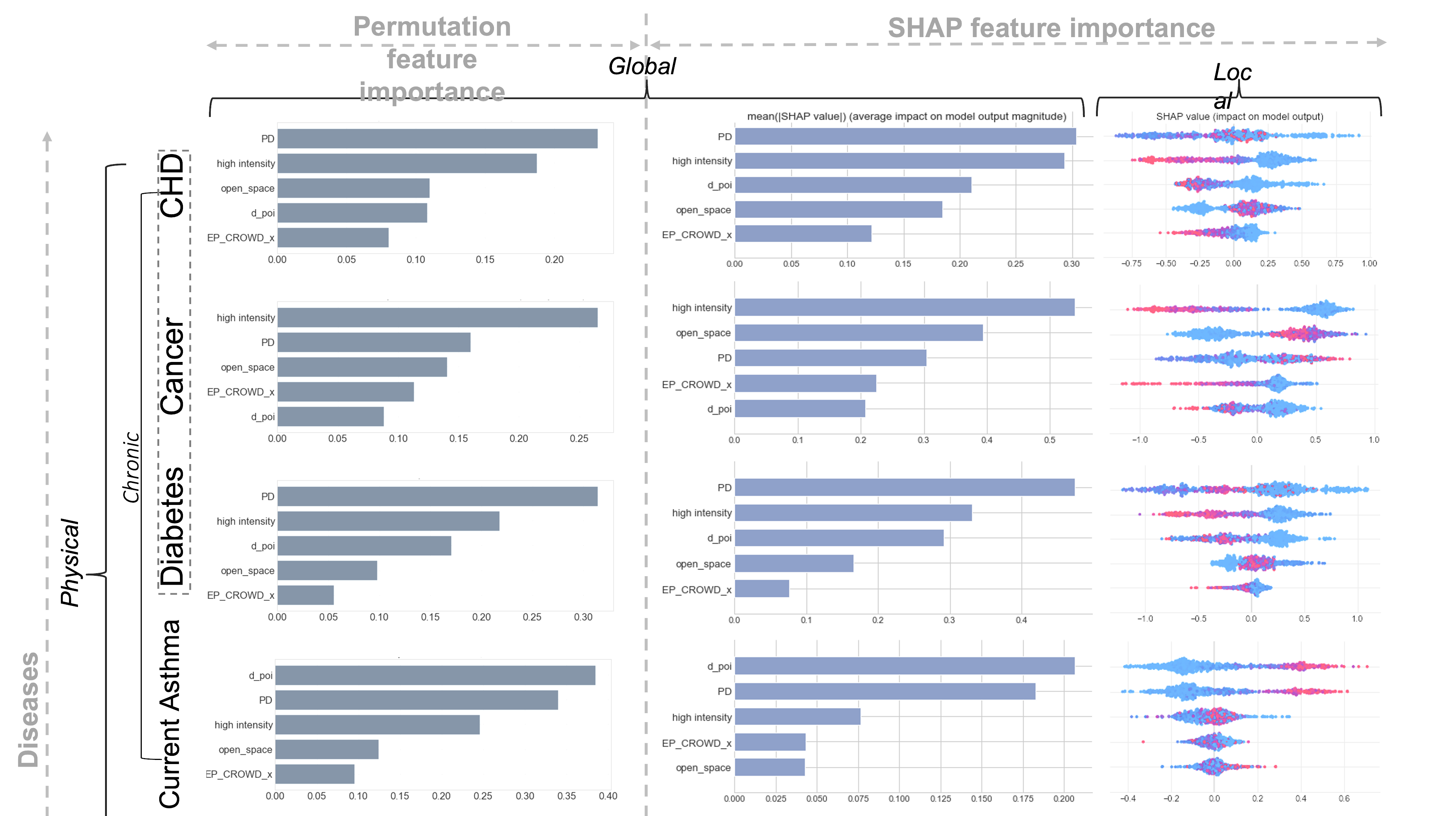The Association Between Urban Density and Multiple Health Risks Based on Interpretable Machine Learning: A Study of American Urban Communities
基于可解释机器学习的城市密度与多重健康风险关联研究:以美国城市社区为例
Keywords
Urban density, Interpretable machine learning, Public health, Built environment, Chronic disease, Population density
城市密度,可解释机器学习,公共健康,建成环境,慢性疾病,人口密度
Highlights
• Review the development of density theory and redefine urban density.
• 回顾密度理论的发展并重新定义城市密度。
• 构建一种可解释的机器学习方法,用于分析复杂的决策过程。 • Identify the associations between urban density and multiple health risks and present the complex relationships.
• 识别城市密度与多种健康风险之间的关联,并呈现其复杂关系。 • There were some general and specific characteristics of different health risks mainly affected by the interactive depth of environments.
• 不同健康风险表现出一些普遍性和特殊性特征,这主要受环境交互深度的影响。
Introduction
As urbanization increases the density of living areas, people wonder the relationship between urban density and public health. A wide debate of urban growth is while high density contributes to great efficiency, diversity and sharing of resources, the compactness within city diminishes quality of individual`s life, given the increase of disease, pollution and crime. The pandemic of COVID-19 exacerbated this contradiction. Evidence shows that though big cities possess better medical condition and entire infrastructure system, high activity intensity, frequent human mobility and close social contact cause the explosion of cases in large cities such as New York and London. With these shifts come a new urgent challenge of developing a predictive and practical theory to guide sustainable urban development.
随着城市化增加了居住区域的密度,人们开始探讨城市密度与公共健康之间的关系。关于城市发展的广泛讨论中,一方面认为高密度能够提升效率、多样性以及资源共享,但另一方面,城市的紧凑性也因疾病、污染和犯罪的增加而削弱了个人生活质量。新冠疫情进一步加剧了这种矛盾。有证据表明,尽管大城市拥有更好的医疗条件和完善的基础设施系统,但高强度的活动频率、频繁的人口流动以及密切的社会接触导致纽约和伦敦等大城市病例激增。随着这些变化的出现,发展一种能够指导可持续城市发展的预测性和实用性理论已迫在眉睫。
In this paper, a ML-based approach for understanding non-linear and complex associations has been developed and validated in cases of American metropolitan areas. Several interpretable methods are conducted to explain the decision-making process of ML models. By comprehensively studying multiple health risks and their associations with urban density, some valuable findings are obtained from this research to help answer the questions of the relationships and mechanisms between urban density and health risks.
本文提出了一种基于机器学习的方法,用于理解非线性和复杂关联,并在美国大都市地区的案例中进行了验证。通过采用多种可解释性方法,阐释了机器学习模型的决策过程。本研究全面分析了多种健康风险及其与城市密度的关联,得出了一些有价值的发现,有助于解答城市密度与健康风险之间关系及其机制的问题。
Publication
materials
Data will be made available on request.



